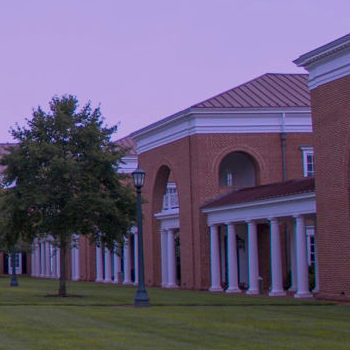
Every day, colleges and universities are recognizing new challenges in the higher education enterprise, especially as it relates to student learning, graduation, and preparation for post-college success. Higher education leaders, faculty, and students know that innovation leads to compelling solutions. Colleges and universities are taking novel approaches to address challenges and fulfill their promise to students and to society as a whole that higher education will continue to be a foundation for prosperity, citizenship, and strong communities.
Trustees should consider how their institutions are fulfilling the promise of higher education, and share that with thought leaders, policymakers, and the public.
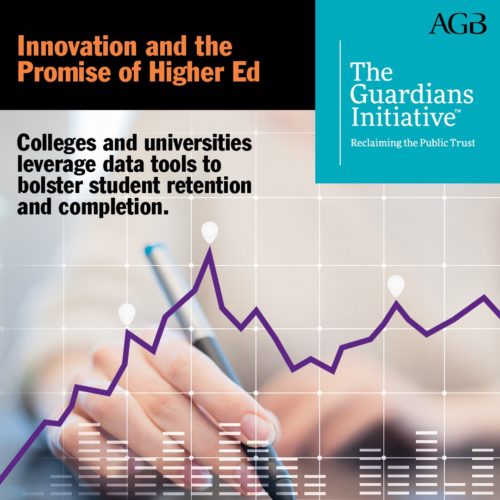
Institutions are using the data they have available to provide more responsive advising, intervene early on behavioral or mental health issues, or offer additional course sections to respond to student demand or ensure on-time degree completion.
Colleges and universities have adapted their curricula using data analytics to meet the interests of students and the needs of the workforce. As a result, career-oriented programs like business, health professions, engineering, and computer and information sciences are of great interest to students.
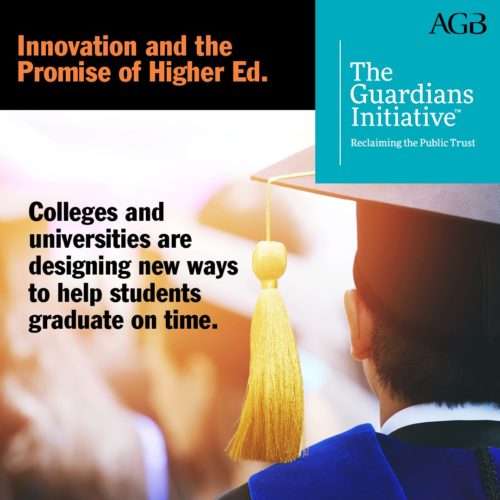
Experts agree that US progress on degree completion is too slow and we must redouble our efforts to support economic growth by providing a well-educated workforce. Colleges and universities are considering how to adjust their credit transfer policies to ease students’ paths between institutions in order to ensure students do not stall their graduation or drop out in the face of lengthy time to degree, excessive costs, or the need to retake courses.
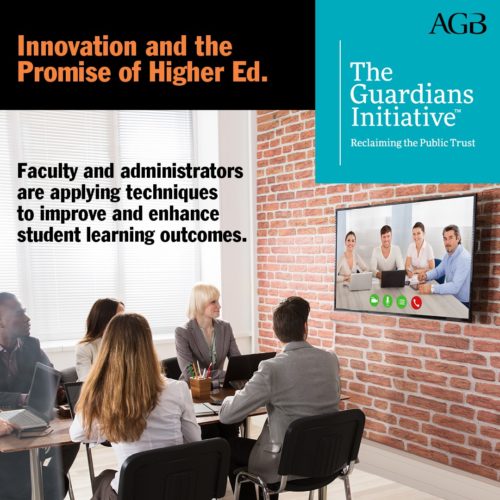
Innovative course formats in both traditional, online and hybrid courses make classes more effective, interesting, and engaging. Technology-assisted learning, flipped classrooms, and project-based learning are becoming widely adopted on campuses across the country.
Institutions are also moving to provide students with academic, financial, logistical, and social support in order to aid in their transition to and through higher education, including taking new approaches to required and remedial coursework. They’re reorganizing academic offerings around high-impact student learning experiences, like those identified in the National Survey of Student Engagement, including first-year experiences, learning communities, undergraduate research, and internships.
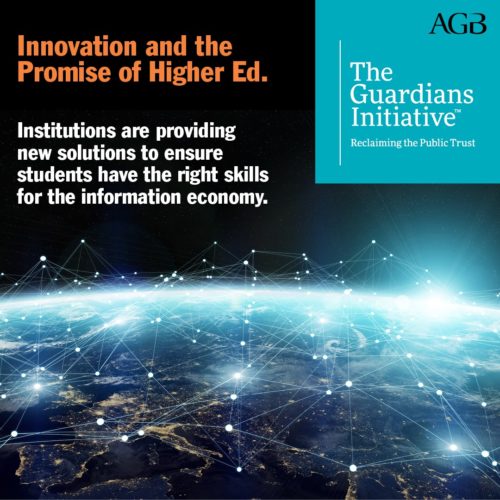
Colleges and universities help students prepare for meaningful careers by offering work-based learning opportunities that are integrated with classroom learning. They are also expanding use of prior-learning assessment, external credit recommendations, credit-by-exam, and competency-based education. Employers still say that graduates with critical thinking, reasoning, and communication skills are highly valued. In response, colleges and universities are providing students with career-relevant courses that also offer cross-cutting skills needed for success in any field.

Changing student demographics, the demands of economic transformation, and heightened public expectations are driving a new era of innovation in higher ed.
Boards and Innovation in Higher Education
AGB has long been a proponent of boards leading their institutions’ innovation efforts. Presidents and board members looking for more inspiration should check out the Innovation in Higher Education page, with links to the AGB Board of Directors’ Statement on Innovation in Higher Education, our innovation checklist, two podcast episodes, and case studies.
RESOURCES
Talking Points: Innovation and the Promise of Higher Education
The Promise of Higher Education
Trusteeship Radio: Innovations in Higher Education
AGB Board of Directors’ Statement on Innovation in Higher Education
Making Advocacy Part of Your Board’s Culture
Infographic #1
Infographic #2
Infographic #3
Infographic #4
Infographic #5

